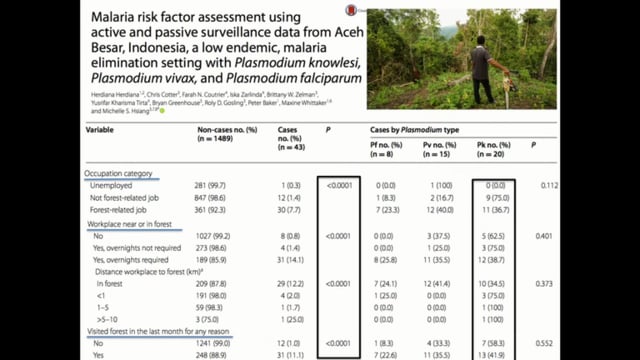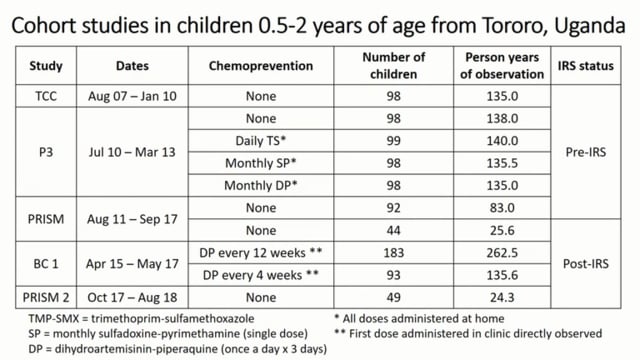ASTMH 2018: Session 118 “Malaria Elimination in Asia and Africa”
Published: 18/12/2018
THEMES: THEMES: Surveillance | Vector Control | Vulnerable Populations
MESA Correspondents bring you cutting-edge coverage from the 67th ASTMH Annual Meeting
Session 118: “Malaria Elimination in Asia and Africa “
Many of the challenges for malaria elimination centre on surveillance for rapid identification of the sources of infection, for example in forest or village, and whether infection is indigenous or imported. In this session, seven speakers discussed challenges to malaria elimination in Asia (Thailand, Myanmar, Cambodia, Indonesia) and Africa (Tanzania, Uganda, and Senegal). They discussed emphasized innovative strategies to detect then target sources of infections.
“Going the last mile” for elimination demands adequate surveillance for identification of every locally acquired infection, and surveillance followed by response to cases originating outside the area. A “1-3-7” approach used recently as part of successful elimination in China (with cases reported on day 1, investigated within 3 days, and response generated within 7 days) was applied in response to a malaria outbreak in Sisaket, Thailand in 2017 and reported by Lausatianragit. The greatest risk of infection was among forest goers sleeping outside. Despite good coordination with civilian actors, it was challenging to follow up the many infections among the military because of their ongoing duties. Strategies were discussed for coordination of activities to protect at risk individuals, such as the use of military uniforms that prevent mosquito bites.
Another example of the challenges of “forest-fringe” malaria, this time in Myanmar, was described by Tun who evaluated residual malaria transmission in a village close to water that continues to have an increasing parasite prevalence despite standard interventions. The majority (94%) of infections were detected among forest goers, with little evidence for transmission within the village. The use of mobile workers and active surveillance of returning forest goers with fever were strategies employed to detect remaining reservoirs of infection.
Nguon also identified that transmission hot spots were to be found in forest and fringe locations, this time in Pursat, Cambodia. Mobile teams targeted forest goers at entry points or ‘touch points’, as well as inside the forest, to create an active surveillance system that increased both diagnoses and treatments. This active strategy identified hotspots of cases and reservoirs of malaria burden, with scale up requiring collaboration and coordination among stakeholders.
Mkali presented a case-based surveillance system in Zanzibar to classify cases and foci as either indigenous or imported to in order to optimize responses. The presentation demonstrated the feasibility of this system, to allow targeting and stratification of interventions for imported infections or residual active foci to accelerate elimination efforts.
Elyazar investigated use of commercially available GPS trackers in Indonesia to evaluate human mobility patterns among forest workers at risk of malaria infection. Patterns of short or long movement were tracked. The overall results suggest this is a promising and scalable approach to tracking forest goers, but data was lost when individuals did not carry or charge the device.
Kamya presented data from a high burden malaria district in Uganda that had seen a dramatic decline following multiple and numerous interventions over the past decade. The most dramatic falls followed Indoor Residual Spraying, especially when combined with chemoprevention with DP, that has almost eliminated malaria in young children.
Volkman demonstrated the extra information that can be obtained from genetic analyses, in showing how imported malaria could be differentiated from locally transmitted infections in the very low incidence region of Richard Toll, Senegal. In this proof of concept study, genetic signatures revealed that a large proportion of infections were genetically similar to infections from other regions in Senegal. In contrast, evidence of persisting infections and genetically related infections within households with no travel history were consistent with locally transmitted infections.
Chair and Co-Chair: Sarah Volkman (Harvard T.H. Chan School of Public Health, USA) and Moses Kamya (Makarere University, Uganda)
This report was written by Sarah Volkman with editorial support from Professor Graham Brown.
Published: 18/12/2018
THEMES: Surveillance | Vector Control | Vulnerable Populations


